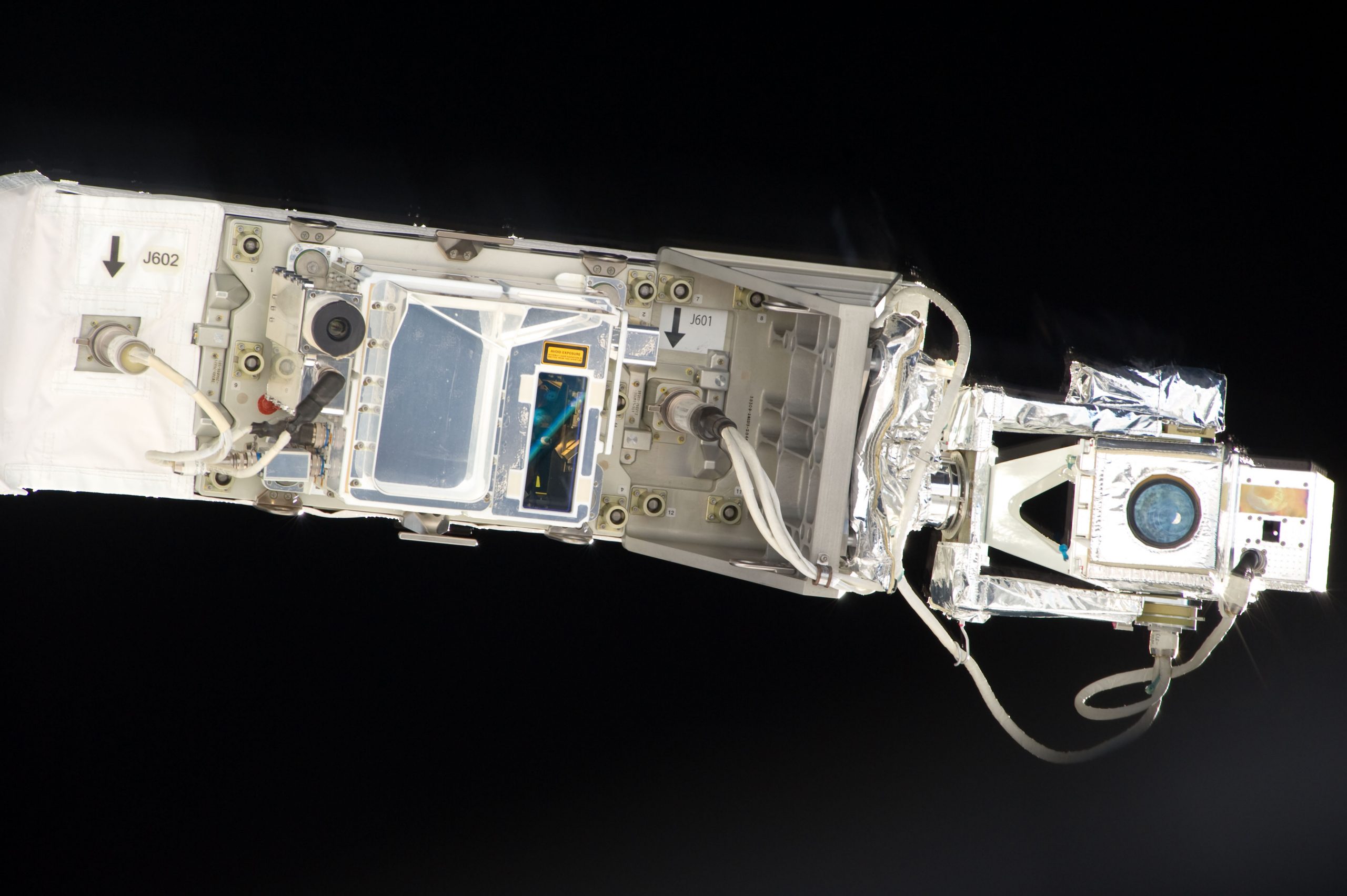ALBUQUERQUE, N.M. – Nine engineers from Sandia National Laboratories helped ensure Atlantis’ safety from Mission Control at Johnson Space Center as the shuttle made its final flight, marking the end of NASA’s 30-year space shuttle program. For the past 22 missions — every one since NASA’s 2005 return to space — Sandia Labs’ engineers have worked tirelessly to protect the astronauts with ingenious, space-based inspections of the orbiter’s thermal protection system.
After Columbia’s debris-damaged heat shield failed in 2003, causing the tragic accident that took the lives of all seven on board, Sandia developed a laser dynamic range imager, or LDRI, which generates 3-D images from two-dimensional video. The LDRI Orbiter Inspection System (LOIS) is attached to the orbiter’s boom and scans the heat shield twice – once 18 hours after liftoff and then again the day before re-entry – to ensure that no part of the orbiter’s heat shield was damaged during launch or orbit.
“It’s been an excellent relationship between Sandia and NASA and a true team effort,” said Bob Habbit, manager of Sandia’s Remote Sensing and Communications System group. “The people we work with here are, in effect, co-workers. We’ve had a very tight relationship, so it’s tough to see that relationship come to a close for this project, but again, we are very proud of what we’ve been able to do and the support we’ve provided for NASA.”
The effort needed to execute the scan is extensive. In the early days, beginning with the launch of Discovery on July 26, 2005, Sandia took a 24-person team to Texas to oversee all aspects of LOIS; some of that work was eventually turned over to NASA, so for the last 17 missions, usually only nine or 10 Sandians went to Houston for the hands-on work.
“We led the inspection activity and operations in the payloads operations center for the data collections. We validated that the data was correct and that the sensor was operating properly, and then we reviewed the work of the NASA team to make sure that the data had been processed correctly,” Habbit said. “That was our principal role, but in the event that there was some defect found, we provided technical expertise and support to the mission management team.”
Sandia’s role extended beyond the launch and re-entry; team members worked intensely before, during and after each mission to ensure everything went smoothly. “After every touchdown, once the orbiter returned to Kennedy Space Center, we did a full checkout and calibration on LOIS, and then we would integrate it back to the orbiter at the Orbiter Processing Facility,” Habbit said. “Before the next launch, our team would again test the system on the launch pad before the payload bay doors were closed.”
The shuttle program has launched 355 astronauts into space since its inception in 1981, hauled into orbit and maintained the Hubble Telescope (which captured its millionth observation July 4), and was the workhorse that assembled the International Space Station. As the nation awaits the next manned missions into space, Sandia’s team is already participating in panels exploring NASA’s future needs.
NASA gave Sandia a tremendous honor after exceptional work during STS-131 in April 2010. NASA managers invited Sandia’s team to be part of the STS-131 plaque-hanging ceremony, a long-standing tradition to acknowledge outstanding efforts during the mission. The ceremony took place in the Mission Evaluation Room’s conference room, which is across the hall from the historic Apollo Mission Control Center.
Sandia’s final inspection of Atlantis was July 19, and all went smoothly. To mark the occasion, Habbit wrote in an email to his colleagues: “This milestone is met with conflicting emotions — a great deal of pride and accomplishment for an excellent contribution to the nation and sadness to see Sandia’s NASA shuttle program partnership come to closure.”



